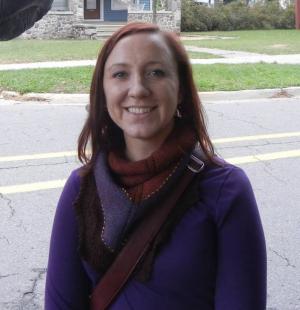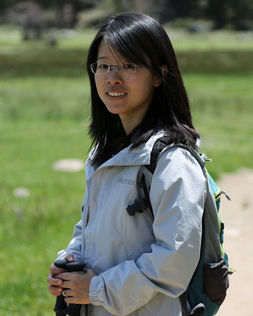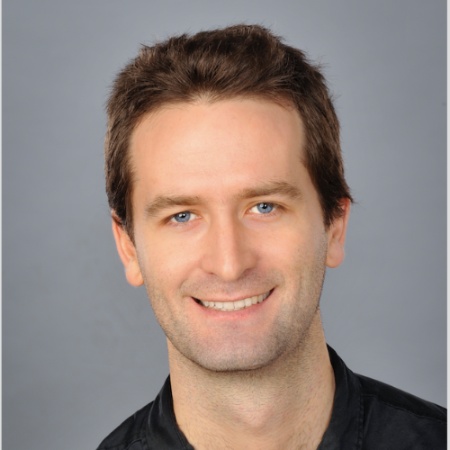Current fellows
- Feng Chen
- Alicia Aarnio
2017-2019
2016-2018
Emeritus fellows
- Fang Fang
- Jean-Fran
ois Cossette
2015-2017
2014-2016
Current Fellows
Feng Chen
 My research focuses on the emergence of magnetic field from the interior of the Sun to its
surface and further to the solar corona. I study how the magnetic field gives rise to the
brillant dynamic structures of the corona observed in extreme ultraviolet wavelengths. I
use super computers to carry out magnetohydrodynamic simulations that produce images
looking like the real Sun.
My research focuses on the emergence of magnetic field from the interior of the Sun to its
surface and further to the solar corona. I study how the magnetic field gives rise to the
brillant dynamic structures of the corona observed in extreme ultraviolet wavelengths. I
use super computers to carry out magnetohydrodynamic simulations that produce images
looking like the real Sun.Featured work:
Chen, Rempel, & Fan 2017 "Emergence of Magnetic Flux Generated in a Solar Convective Dynamo. I. The Formation of Sunspots and Active Regions, and The Origin of Their Asymmetries" ApJ, 846, 149
Alicia Aarnio
 I study the Sun and young solar analogs to understand the evolution of activity on solar-like stars.
I also study pre-main sequence, intermediate-mass Herbig Ae/Be stars, combining spectroscopy and
interferometry to understand how they interact with their circumstellar disks. In my work, I use optical,
infrared, and X-ray spectroscopic and photometric observations and run radiative transfer and convective
dynamo simulations. I'm currently co-chair of the AAS Working Group on Accessibility and Disability
(WGAD), co-chair of the AAS Site Visit Oversight Committee (SVOC), and a
member of the Chandra User's Committee (CUC).
I study the Sun and young solar analogs to understand the evolution of activity on solar-like stars.
I also study pre-main sequence, intermediate-mass Herbig Ae/Be stars, combining spectroscopy and
interferometry to understand how they interact with their circumstellar disks. In my work, I use optical,
infrared, and X-ray spectroscopic and photometric observations and run radiative transfer and convective
dynamo simulations. I'm currently co-chair of the AAS Working Group on Accessibility and Disability
(WGAD), co-chair of the AAS Site Visit Oversight Committee (SVOC), and a
member of the Chandra User's Committee (CUC).Featured work:
Reiter et al. (incl. Aarnio) 2018 "Linking Signatures of Accretion with Magnetic Field Measurements–Line Profiles are not Significantly Different in Magnetic and Non-magnetic Herbig Ae/Be Stars" ApJ, 852, 5
Aarnio et al. 2017 "High-cadence, High-resolution Spectroscopic Observations of Herbig Stars HD 98922 and V1295 Aquila," ApJ, 848, 18
Monnier et al. (incl. Aarnio) 2017 "Polarized Disk Emission from Herbig Ae/Be Stars Observed Using Gemini Planet Imager: HD 144432, HD 150193, HD 163296, and HD 169142," ApJ, 838, 20
Karim et al. (incl. Aarnio) 2016 "The Rotation Period Distributions of 4-10 Myr T Tauri Stars in Orion OB1: New Constraints on Pre-main-sequence Angular Momentum Evolution" AJ, 152, 198
Emeritus Fellows
Fang Fang
 Currently a Research Assistant Professor in the department of Physics and Astronomy at West Virginia University, Fang's work focuses on numerical modeling in solar physics, including the global interior dynamo, magnetic flux emergence, and coronal eruptive events.
Currently a Research Assistant Professor in the department of Physics and Astronomy at West Virginia University, Fang's work focuses on numerical modeling in solar physics, including the global interior dynamo, magnetic flux emergence, and coronal eruptive events.Featured work:
Liu, Jiajia et al. (incl. Fang) 2016 "On the Observation and Simulation of Solar Coronal Twin Jets" ApJ, 817, 126
Fan, Yuhong & Fang, Fang 2016 "Differential rotation in solar convective dynamo simulations" AdSpR, 58, 1497
Jean-Fran
 I obtained a PhD in solar physics in 2014 from University of Montreal, in Montreal, Canada. My work has
concentrated on numerical methods for fluid dynamics, especially finite-volume
methods for global magnetohydrodynamical (MHD) simulations of the solar convection zone using implicit
schemes for numerical dissipation. These simulations are known for their use of a Newtonian cooling term
to drive solar convection, as opposed to large-amplitude cooling and heating applied at the base and top of the domain.
This approach reduces the solution's dependence on numerical dissipation, which is important for generating
large-scale cyclic solar-like magnetic fields. My other research interests include the origin of solar supergranulation
and the investigation of the solar p-modes' acoustic sources using realistic MHD simulations of solar surface convection.
I am currently a postdoctoral researcher at University of Montreal, where I work on a neural network algorithm
used to reconstruct the horizontal flow component at the Sun's surface using the surface intensity obtained from
both surface convection simulations and observations.
I obtained a PhD in solar physics in 2014 from University of Montreal, in Montreal, Canada. My work has
concentrated on numerical methods for fluid dynamics, especially finite-volume
methods for global magnetohydrodynamical (MHD) simulations of the solar convection zone using implicit
schemes for numerical dissipation. These simulations are known for their use of a Newtonian cooling term
to drive solar convection, as opposed to large-amplitude cooling and heating applied at the base and top of the domain.
This approach reduces the solution's dependence on numerical dissipation, which is important for generating
large-scale cyclic solar-like magnetic fields. My other research interests include the origin of solar supergranulation
and the investigation of the solar p-modes' acoustic sources using realistic MHD simulations of solar surface convection.
I am currently a postdoctoral researcher at University of Montreal, where I work on a neural network algorithm
used to reconstruct the horizontal flow component at the Sun's surface using the surface intensity obtained from
both surface convection simulations and observations. Featured work:
Cossette et al. 2017 "Magnetically Modulated Heat Transport in a Global Simulation of Solar Magneto-convection" ApJ, 841, 65
Cossette, J.-F. & Rast, M. P. 2016 "Supergranulation as the Largest Buoyantly Driven Convective Scale of the Sun" ApJL, 829, 17
Beaudoin, P. et al. (incl. Cossette) 2016 "Double Dynamo Signatures in a Global MHD Simulation and Mean-field Dynamos" ApJ, 826, 138